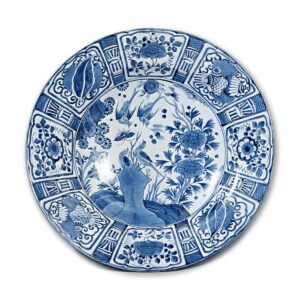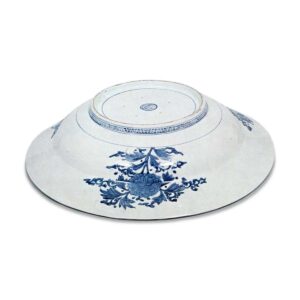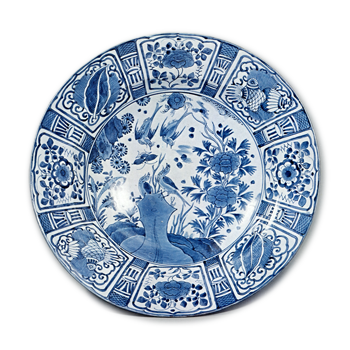

Height 11.9 cm, mouth diameter 54.3 cm, base diameter 23.7 cm
In the Kanbun period (1660s), Arita began to actively imitate the Fuyo hand-dyed ware that had been produced in China at the end of the Ming dynasty.
It was mass-produced for export by order of the Dutch East India Company.
Therefore, few Ko-Imari Fuyote have been handed down to Japan, and most of the excellent pieces are in European collections, which have been reimported in recent years.
This large dish is one of them, and it is the most excellent one among the Ko-Imari Fuyou-te large dishes with dyed decoration that exist in Japan today, and the shape of the dish is probably the largest.
It is a large dish with a straight open mouth with a step at the waist, which is characteristic of Fuyo-te. Four birds, a hibiscus-like peony design, chrysanthemums, flowers, butterflies, etc. are painted around a taiko-seki stone, and peony, flower, eight treasures, etc. designs are shown within a frame with a narrow space around the eight sides.
On the reverse side, three sides are decorated with peony and branch patterns, and the lower part of the base is decorated with a comb pattern.
The color is slightly bluish, but the eye color is bright and vivid for a hibiscus-type ware.
It is said to have been made with gosu pigment by an exporter.
It may have been made between 1670 and the 1980s.



